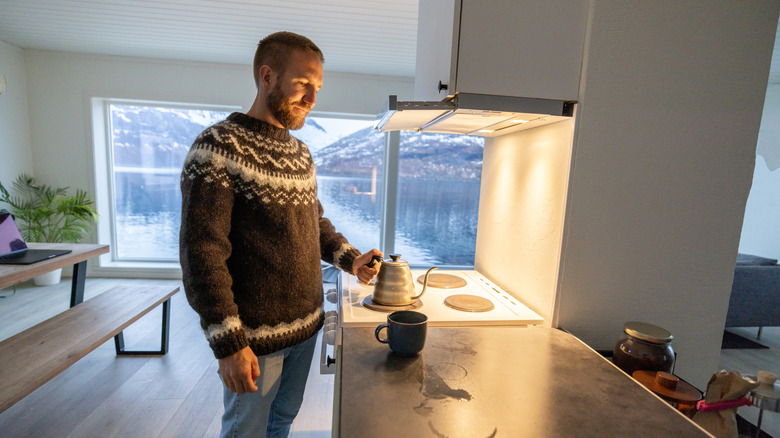Hidden Places In Your Kitchen That Could Be Letting In Cold Air
Kitchens are typically meant to feel warm — physically and conceptually. They're where family gathers around food and conversation, whether that's you and your pet or a large group. This happens even more in the winter, when holidays arrive and family get-togethers ramp up. The last thing you want is for your kitchen to feel cold, but it's a common issue in many households. There are plenty of reasons why your kitchen may feel drafty. Windows and doors are the main features letting cold air into your home. Some less obvious spots — even hidden nooks and crannies — that can cause temperatures to drop in your kitchen include cabinets, electrical outlets and switches, and recessed light fixtures.
The issue is usually caused by small gaps around fixtures or a lack of insulation where these features are typically mounted. Even if insulation has been installed behind cabinets or recessed light fixtures, the smallest gap can make a big difference in how warm your kitchen feels. While the problem may seem minor, especially during the exciting installation process of a new feature, ignoring the issue can turn an otherwise cozy home into somewhere less inviting. Your heating system also has to work overtime to heat your home. Instead of putting on more layers of clothing, do a thorough inspection of your kitchen so you can stay warm this winter for no extra cost — or not much, at least.
Ways to seal your kitchen to stop cold drafts
You need to thoroughly check your entire kitchen if you want to rid your home of cold air once and for all — and help reduce your energy costs at home in the process. If the inside of your kitchen cabinets feel noticeably cold, there's a good chance that you're dealing with poor wall insulation or gaps. Check the thickness of the insulation in your walls and add more if necessary. You can also add insulation under your cabinets. Inspect the cabinets for gaps or cracks in the structure. Seal any you find with caulk or weatherstripping tape.
If you notice cool air coming from your electrical outlets, it's a much easier fix. Address the insulation issue as before, but also add socket sealers behind your current outlet covers to fill the gaps and prevent cold air from seeping in. Feel a draft on the top of your head? Air might be leaking in from recessed lights or other ceiling fixtures. Sometimes, these features are installed into a chilly attic or a similarly non-insulated space. You can look up some of the best ways to insulate your attic in the winter — from applying spray foam installation to topping up your loose-fill insulation — to help address the problem. Alternatively, consider installing different kinds of fixtures. For recessed lights, for example, LED inserts minimize drafts and, bonus, are more energy efficient.

